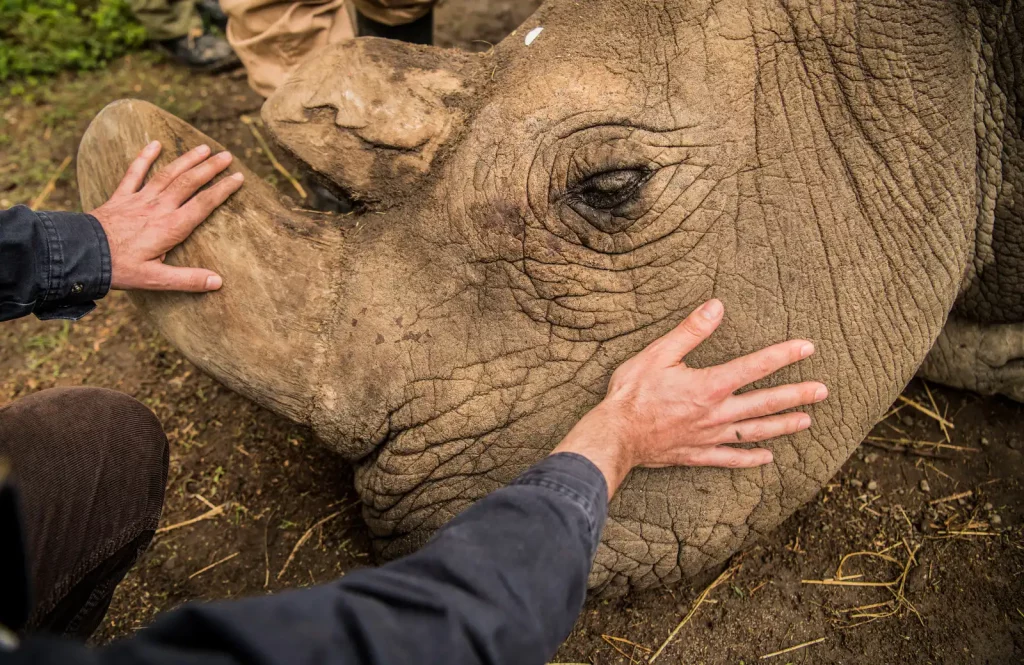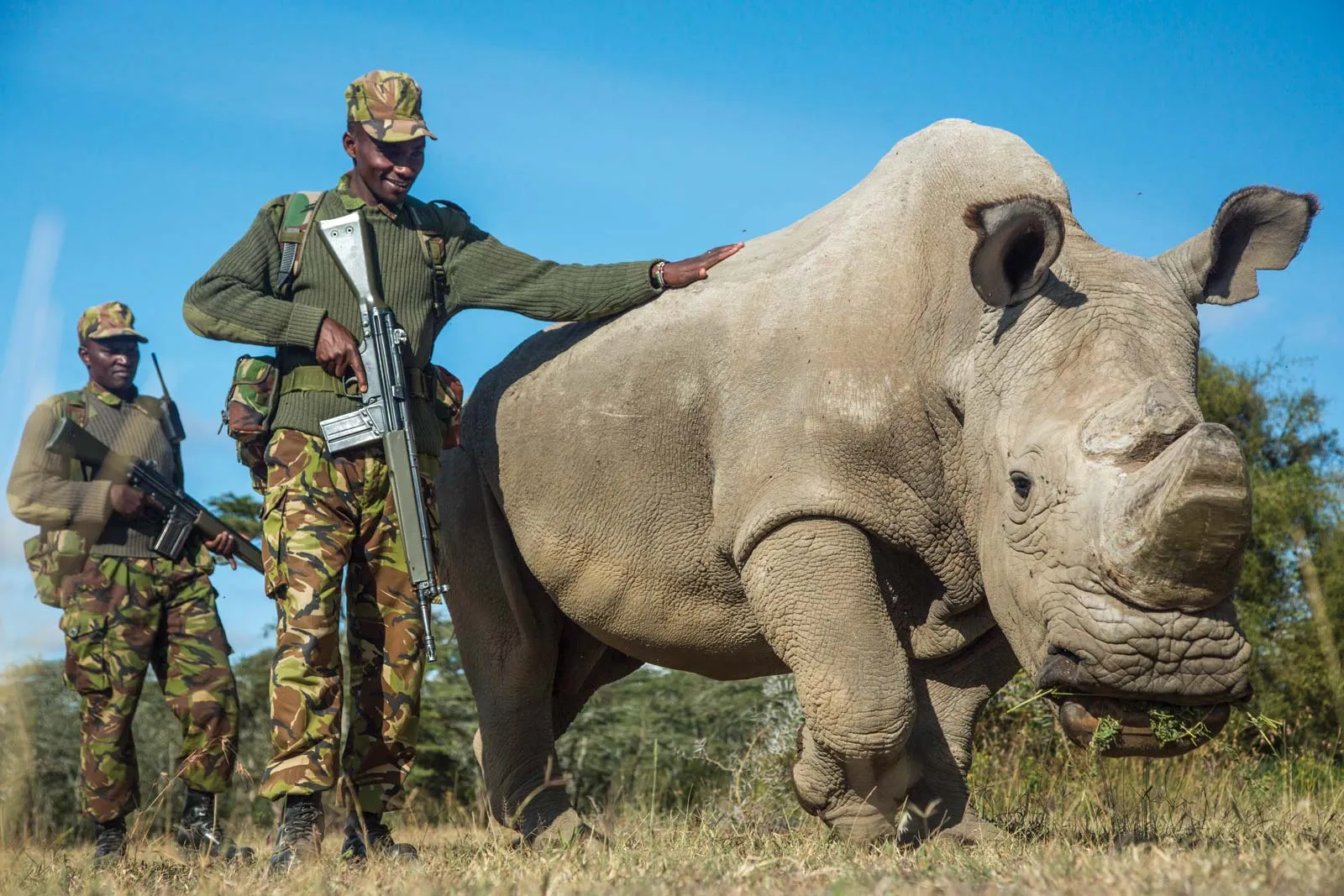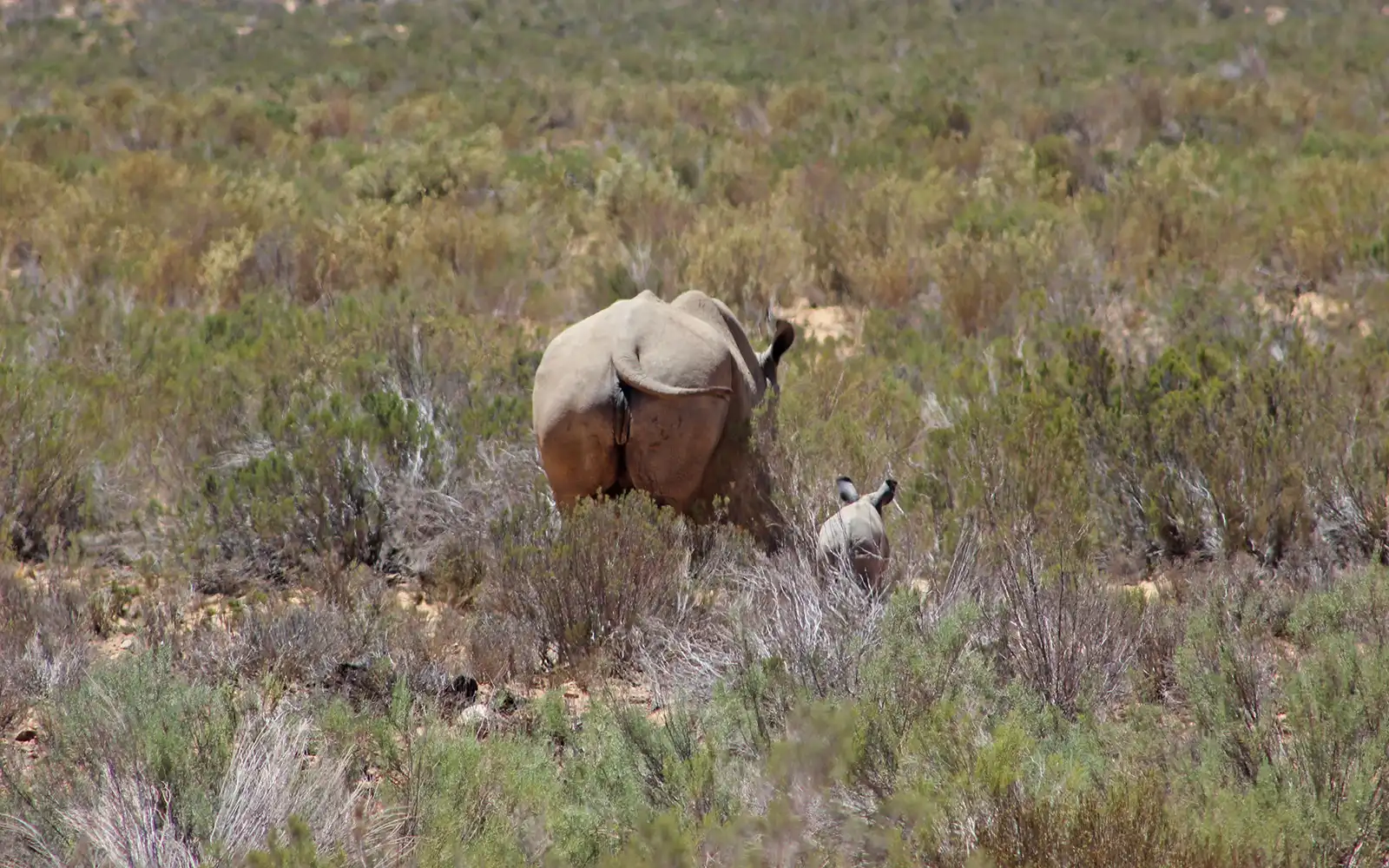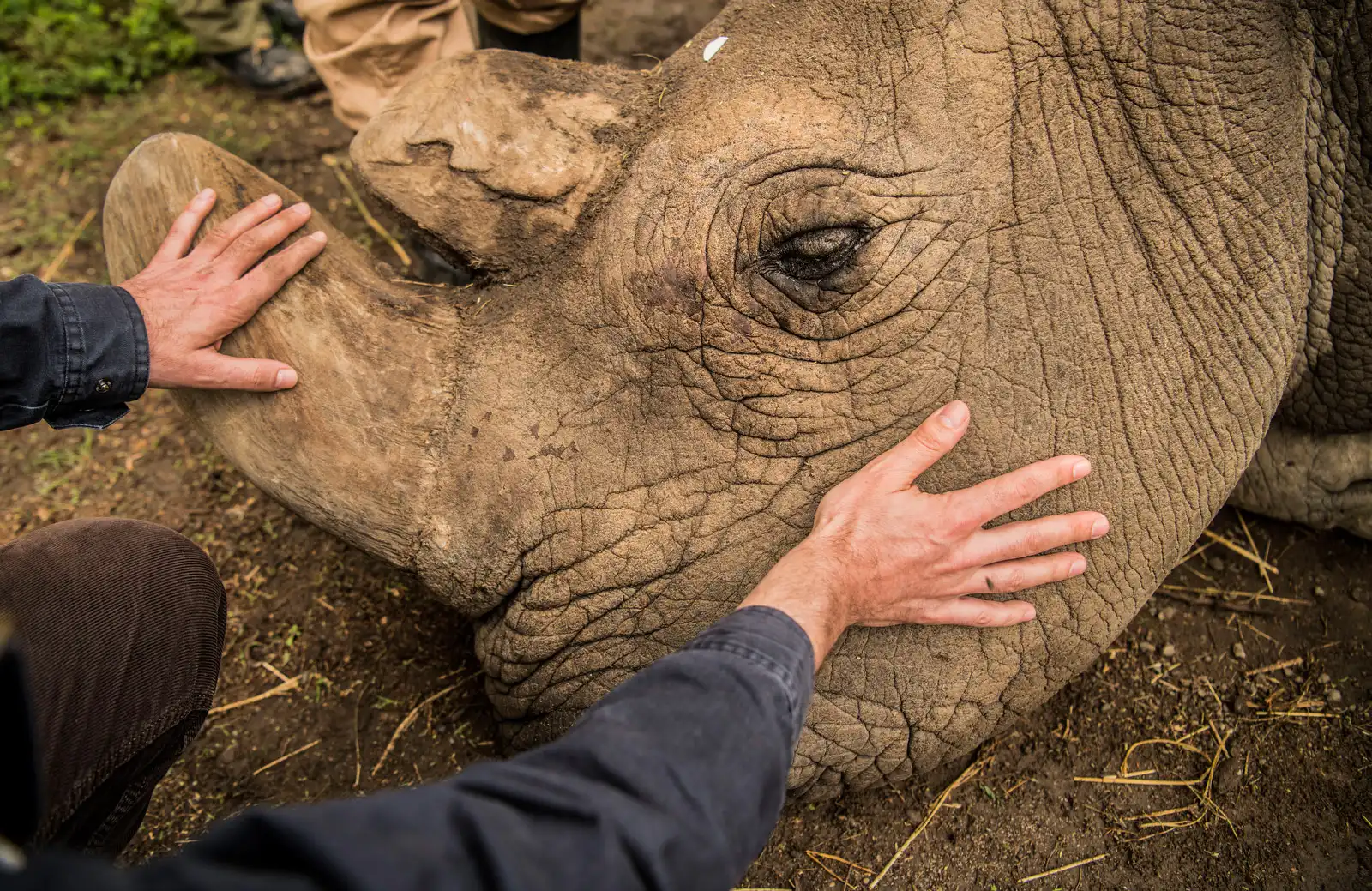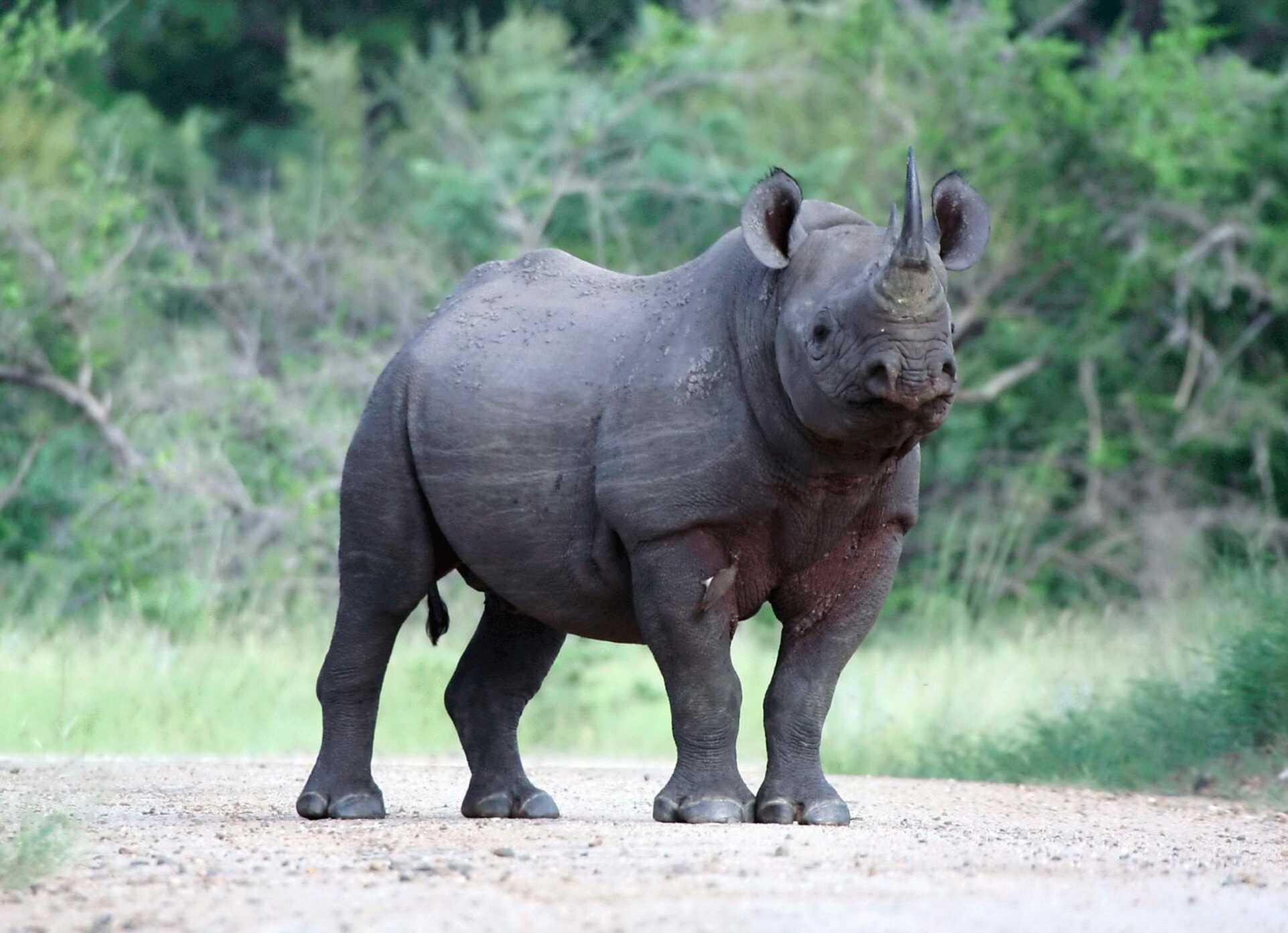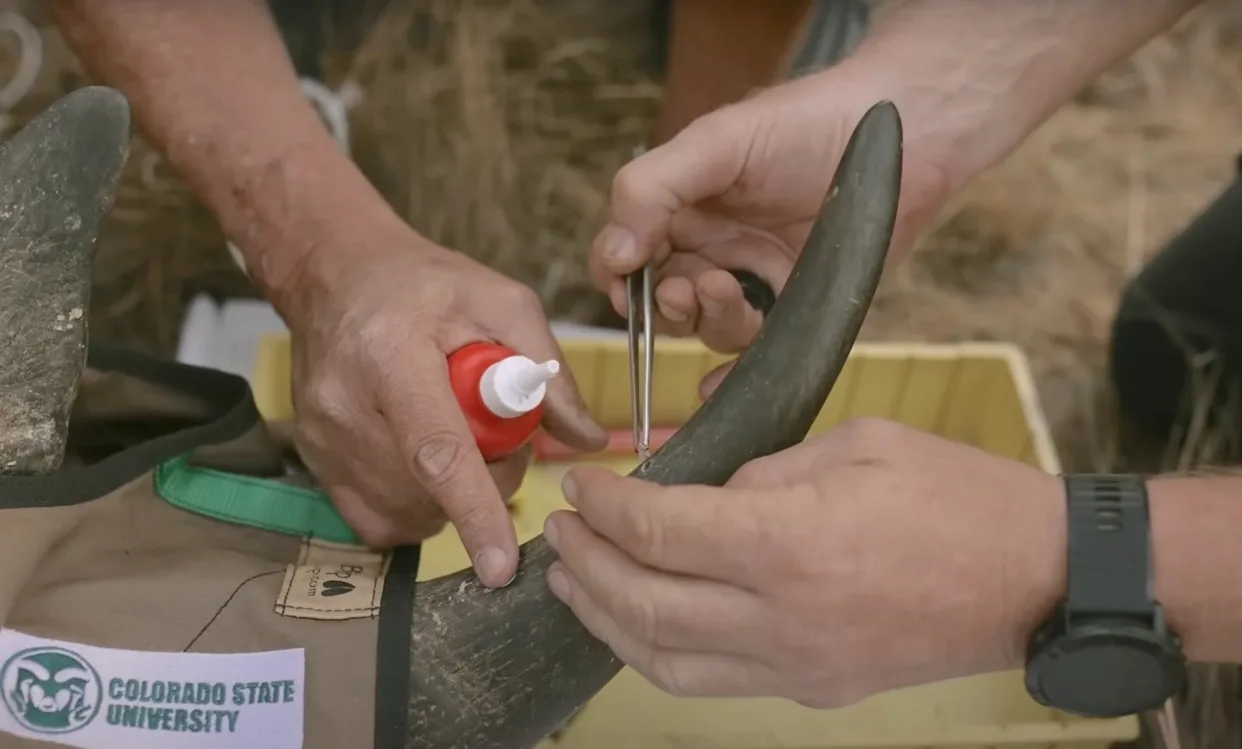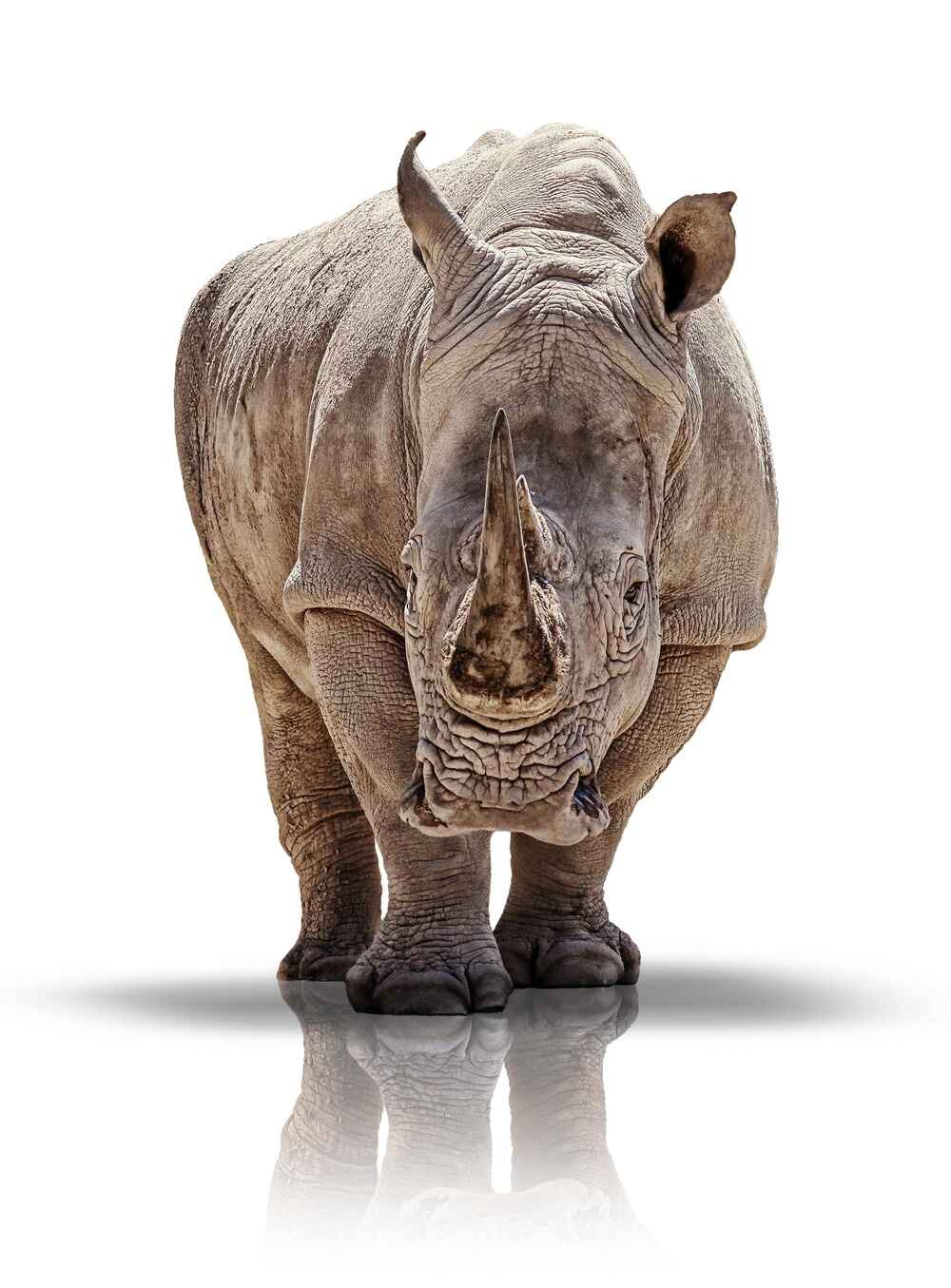The Northern White Rhino, once a thriving species in Central Africa, is now a haunting symbol of the devastating impact of human activities on wildlife. The northern white rhinoceros (Ceratotherium simum cottoni) are a subspecies of the African white rhinoceros, and relatives of the southern white rhinoceros (Ceratotherium simum simum).
Sadly, the northern white rhino has been declared functionally extinct since 2018, with only two females remaining. The status of the Northern White Rhino, from wide-spread populations at the turn of the 20th century to their imminent extinction, is a tragic story, marked by relentless poaching, habitat loss, and ultimately, the loss of this iconic species, forever.
Population and Distribution
The Northern White Rhino once roamed in large numbers across the grasslands and savannas of Uganda, Chad, Sudan, the Central African Republic, and the Democratic Republic of Congo. They were the larger of the two white rhino subspecies, with males weighing up to 2,300 kilograms. These herbivorous giants played a crucial role in their ecosystems, helping to maintain the grasslands and supporting the biodiversity of the regions they inhabited.
During the mid-20th century, the population of Northern White Rhinos began to decline rapidly due to increased poaching. The demand for rhino horns, driven by their supposed medicinal properties and status symbols in some cultures, led to widespread illegal hunting. By the 1980s, the Northern White Rhino population had dwindled to just a few hundred individuals.
Sudan: The Last Male Northern White Rhino
Sudan, the last male Northern White Rhino, became a global symbol of the species’ fight for survival. Born in 1973 in Sudan (from which he got his name), Sudan was relocated to the Dvůr Králové Zoo in the Czech Republic in 1975 as part of a conservation effort. However, by the time Sudan reached adulthood, the population in the wild had been decimated, leaving him one of the last of his kind.
In 2009, Sudan was moved to the Ol Pejeta Conservancy in Kenya, along with two other Northern White Rhinos, in a final effort to preserve the species. Despite the best efforts of conservationists, Sudan was unable to reproduce naturally, and his health began to decline as he aged. On March 19, 2018, Sudan was euthanised due to age-related complications, marking the end of the possibility for natural breeding of the Northern White Rhino.
Sudan’s death was a profound loss, not only for his species but also for the conservation community and the world. He represented the last hope for the natural continuation of the Northern White Rhino lineage, and his passing left behind only two surviving females: Najin and Fatu.
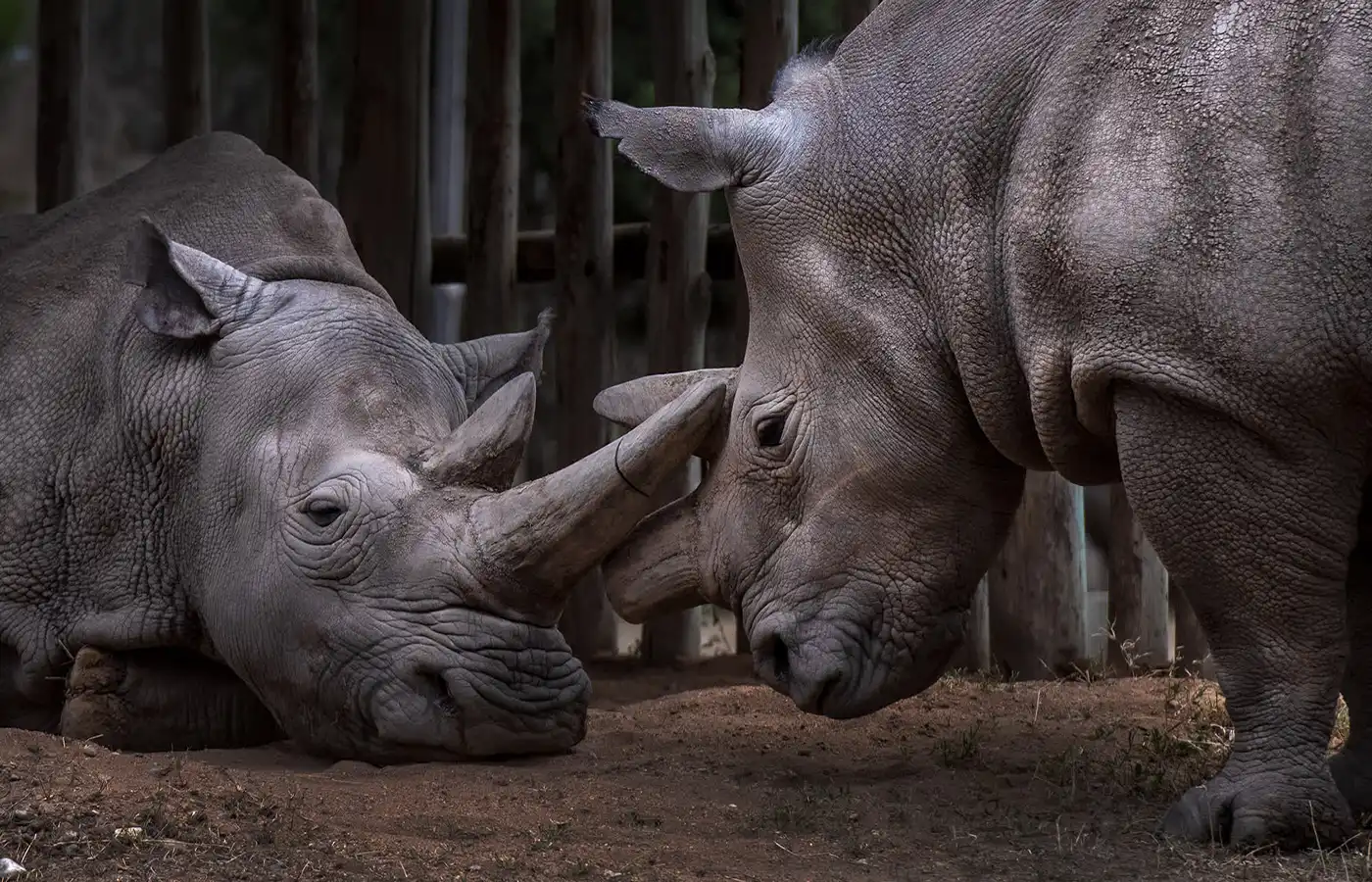
Hope for the Rarest Rhinos in the World
There are only two Northern White Rhinos left on the planet. Both females, Najin and Fatu, are the daughter and granddaughter of Sudan. Both live under constant protection at the Ol Pejeta Conservancy in Kenya, where they are cared for around the clock to ensure their safety. Unfortunately, neither Najin nor Fatu can carry a pregnancy to term, rendering them unable to continue the species naturally.
Despite these challenges, scientists have not given up hope. They have turned to advanced reproductive technologies in an attempt to revive the Northern White Rhino. Using stored sperm from Sudan and another deceased male, scientists have successfully fertilized eggs from Najin and Fatu. These embryos are now preserved, with the hope that they can be implanted into a southern white rhino, a closely related species, as a surrogate mother.
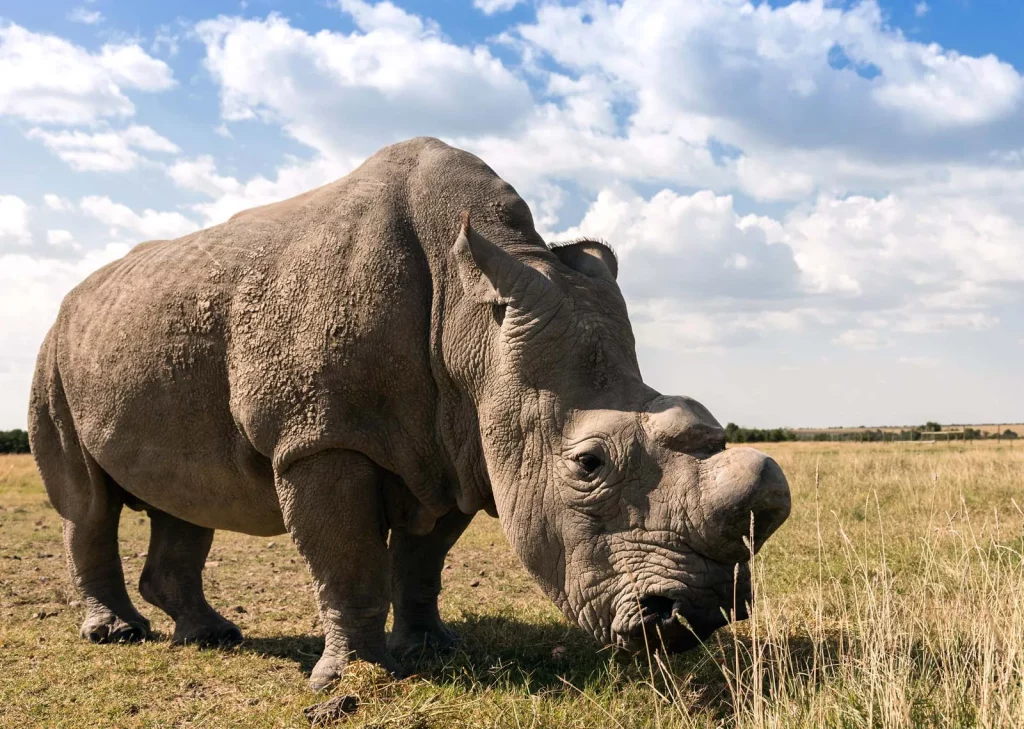
How Did the Northern White Rhino Go Extinct?
The extinction of the Northern White Rhino was not the result of a single event but rather a combination of factors that compounded over time. The primary cause was poaching, driven by the high demand for rhino horns in illegal markets. Despite international efforts to curb this trade, poachers continued to decimate rhino populations, driven by the high prices horns could fetch.
In addition to poaching, human encroachment and civil unrest in the regions where Northern White rhinos lived further accelerated their decline. Despite conservation efforts, the Northern White Rhino could not withstand the relentless pressure from poaching and the destruction of their natural habitat.
The genetic bottleneck caused by the dwindling population made it increasingly difficult for the species to recover naturally. As the population shrank, genetic diversity decreased, leading to a weakened ability for the species to recover from disease or environmental changes.
The final blow came with the death of Sudan, the last Northern White Rhino male, which signalled the end of any hope for natural reproduction within the species. With only two females remaining, the Northern White Rhino is now considered functionally extinct, meaning there are no longer enough individuals to sustain a viable population and their extinction is now inevitable.
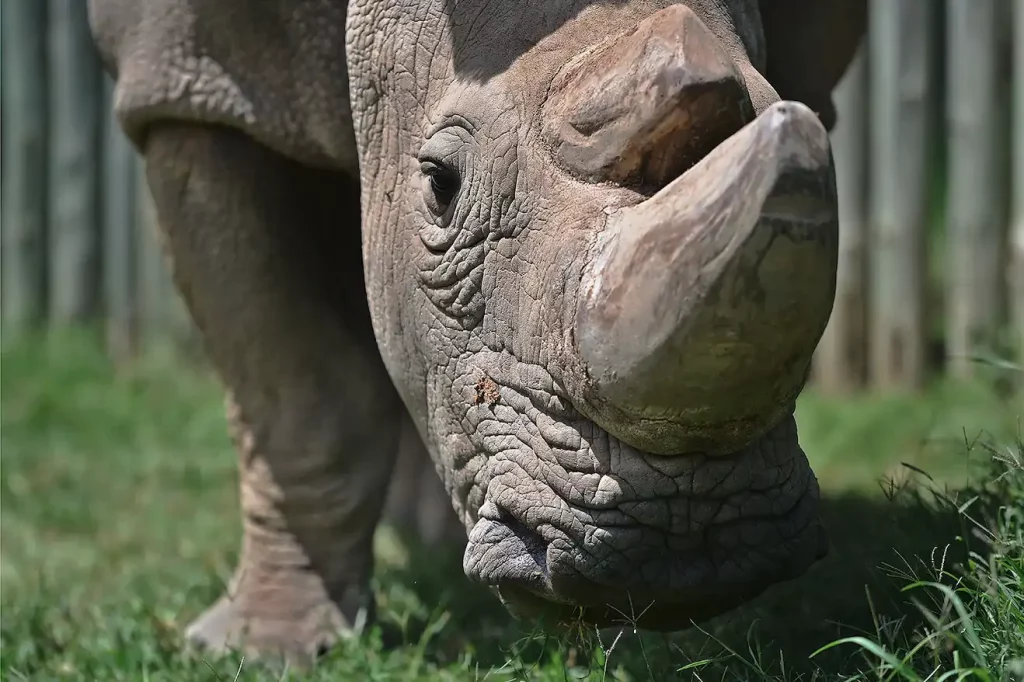
The Last Northern White Rhino
The functional extinction of the Northern White Rhino is a tragic reminder of the impact humans can have on the environment and the urgent need for rhino conservation efforts. While the northern African sub-species is lost, the legacy of Kenya’s dire call for public action lives on in the lessons we have learned and the continued anti-poaching initiatives conservationists, governments, and even scientists are implementing to help save the other five endangered rhino species from a similar fate.
At Saving Private Rhino, we are dedicated to protecting South Africa’s Southern White Rhino and Black Rhino populations from increased poaching and the threat of extinction. Through education, awareness, and innovative anti-poaching training, we are on the frontlines to safeguard these magnificent creatures and their habitats for future generations.
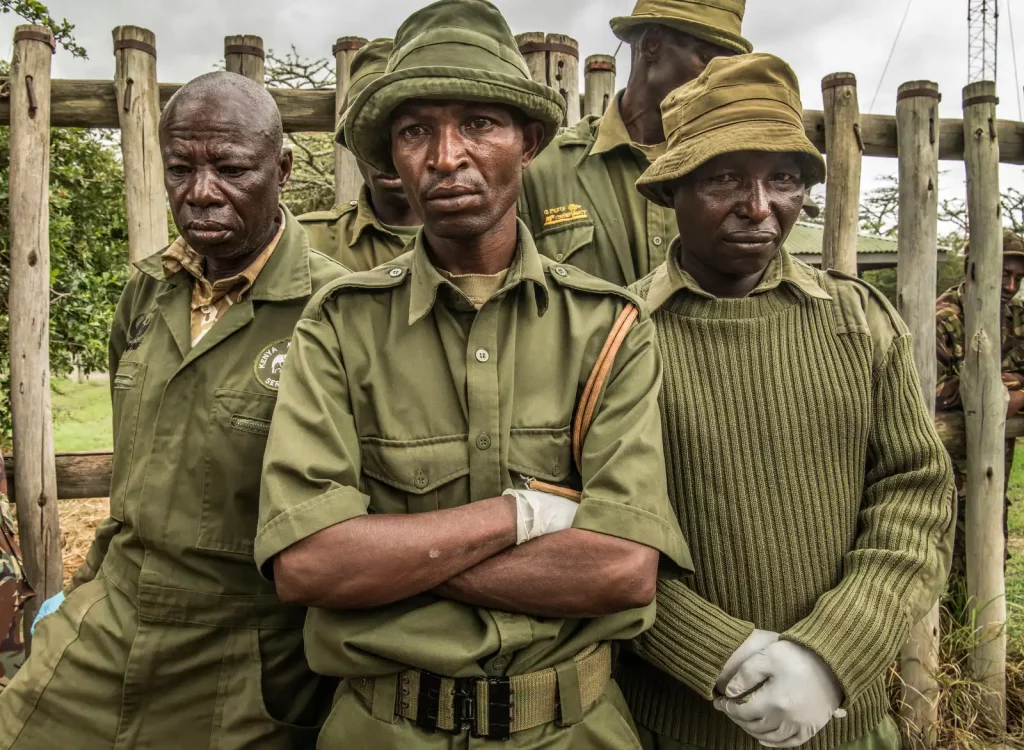
The Impact of Extinction on Ecosystems
The extinction of the Northern White Rhino has far-reaching consequences beyond the loss of a species. Rhinos play a crucial role in their habitats by helping to shape the landscape. As mega-herbivores, they help maintain the balance of vegetation, which supports a diverse range of other species. Their absence can lead to overgrowth of certain plants, affecting the entire ecosystem’s health and the survival of other species.
Get Involved with Saving Private Rhino
At Saving Private Rhino, we work tirelessly to protect South Africa’s rhinos and their habitats through conservation, education, and anti-poaching initiatives. Join us in the fight to save the world’s five remaining rhino species from the same fate as the Northern White Rhino.
The next rhino species that experts fear could face extinction in the wild within the next decade is the Sumatran rhino, as fewer than 50 individuals remain in the wild.
Also read: Why Must We Save Rhinos?
